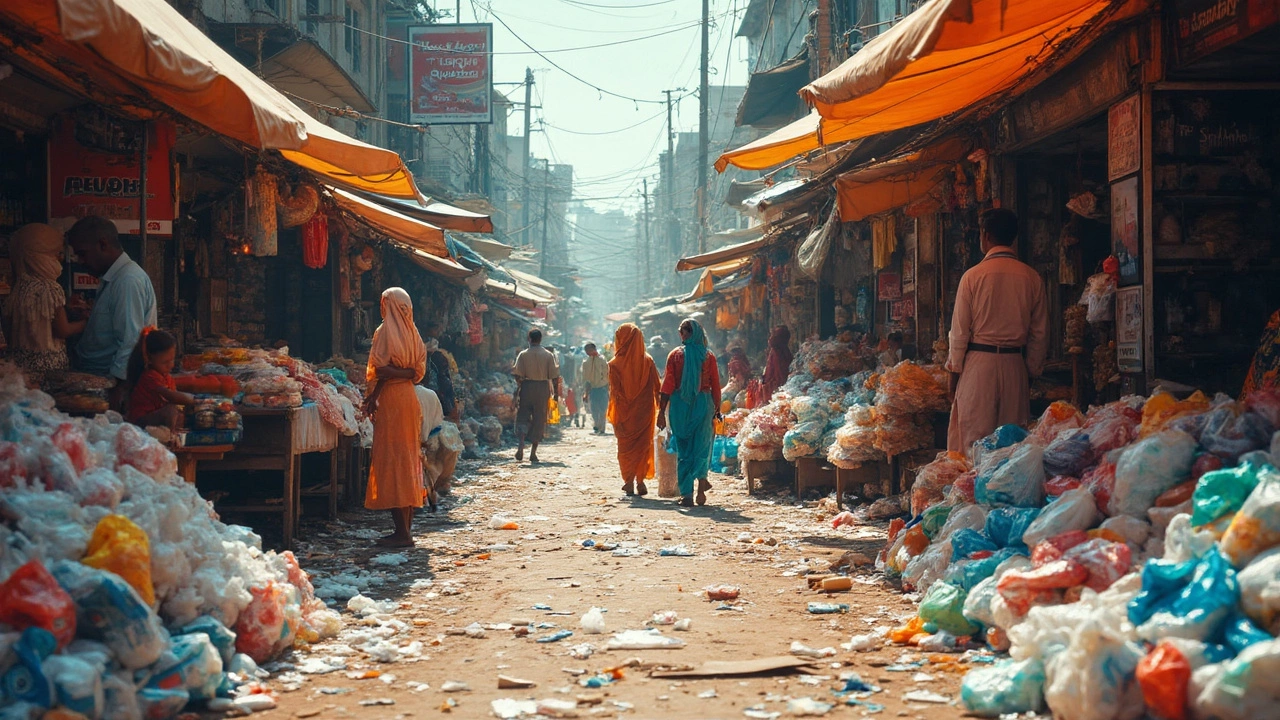- Chemical Manufacturers India: Which State Leads Production? Jun 16, 2025
- Top Steel Producers: Finding the Best Quality Worldwide Feb 19, 2025
- Biggest Weaknesses of Small Scale Industry and How They Hold Back Growth Jun 24, 2025
- Gujarat Famous Cloth: The Story Behind India's Textile Powerhouse May 25, 2025
- Who Still Dumps Garbage in the Ocean: The Role of Plastic Manufacturers Apr 3, 2025
Single-Use Plastic – What It Means for Industry and the Planet
Every day we grab a bottle, a bag, or a wrapper and toss it away. That habit adds up fast, and the waste piles up faster than we can clean it. If you run a factory, you see the same plastic showing up in your supply chain.
Why Single-Use Plastic Still Dominates
Honestly, the biggest reason is price. Plastic is cheap to make, light to ship, and it works for a wide range of products. That cost advantage makes it hard for companies to switch, even when customers ask for greener options.
Convenience also plays a role. People love anything that’s easy to open and throw away. From coffee cups to grocery bags, the "use‑and‑toss" model fits our fast‑paced lives, so demand stays high.
Turning the Tide: Real Ways to Reduce Plastic
The environmental fallout is obvious. Oceans are filling with plastic debris, harming fish, birds, and even mammals. A single plastic bottle can take up to 450 years to break down, releasing chemicals all the way.
Micro‑plastics are sneaking into our food chain, too. Studies show they’re in bottled water, seafood, and even table salt. That raises health concerns we are only beginning to understand.
Governments are stepping in with bans on bags, taxes on bottles, and stricter recycling rules. At the same time, shoppers are picking brands that promise less waste. That pressure is finally reaching factory floors.
For manufacturers, the first step is a quick audit of your packaging. Identify which items are pure plastic and ask yourself if a paper, metal, or reusable option could work without blowing up costs.
Next, look at material innovation. Biodegradable polymers, compostable films, and recycled‑content plastics are now affordable at scale. Partnering with suppliers who specialize in these materials can cut the learning curve.
Life‑cycle assessments help you see the real impact of each product. They highlight hot spots where you can cut waste, such as redesigning a bottle shape to use less material or switching to refill stations.
Rise Corp India offers exactly that kind of support. We combine advanced manufacturing tech with sustainable design to help you replace single‑use items with smarter, greener alternatives. Our team can run pilot runs, test new materials, and set up recycling loops that fit your operation.
Start small but think big. Replace one high‑volume item with a reusable version, track the savings, and use that data to convince leadership to expand the program. The more you act, the faster the market will move away from disposable plastic.
Understanding the Biggest Single-Use Plastic: Surprising Facts and Insights
- Aarav Sekhar
- Mar 17, 2025
The biggest single-use plastic item might surprise you. These everyday items contribute significantly to pollution and environmental issues. This article delves into what exactly is the largest of these offenders, their impact on our planet, and practical tips on how to reduce their usage. Discover the role of plastic manufacturing companies in this dilemma and what is being done to combat it.
